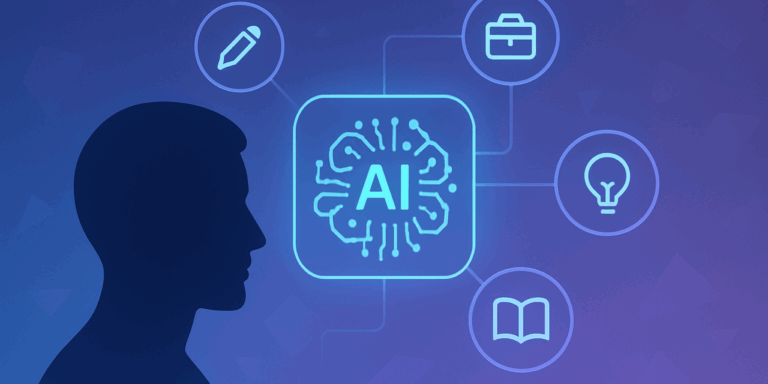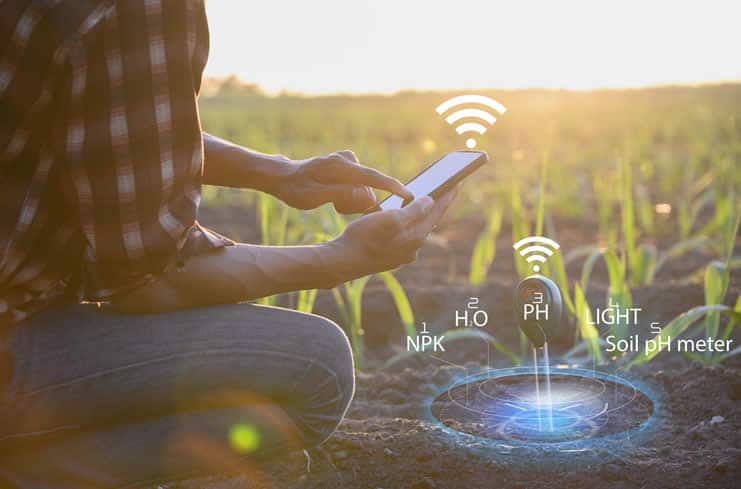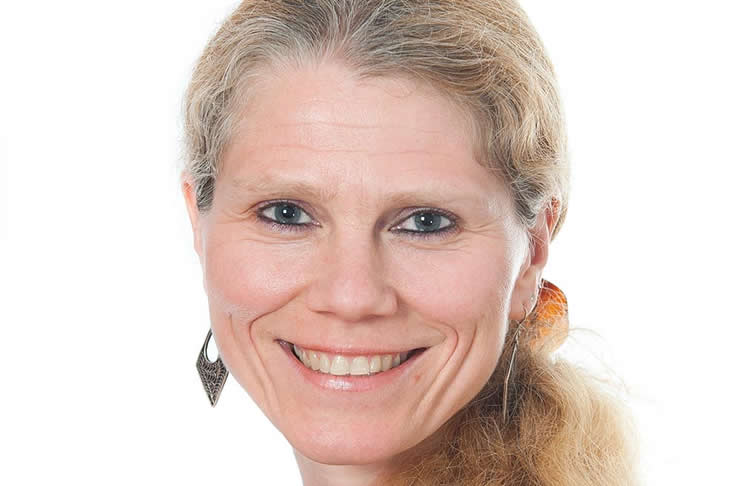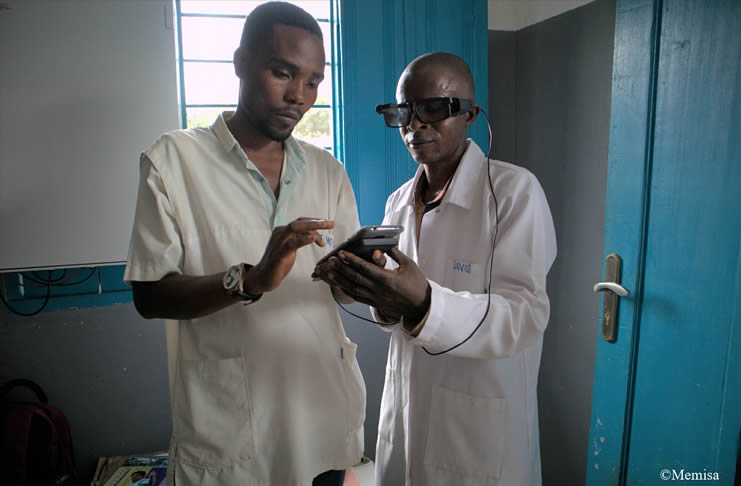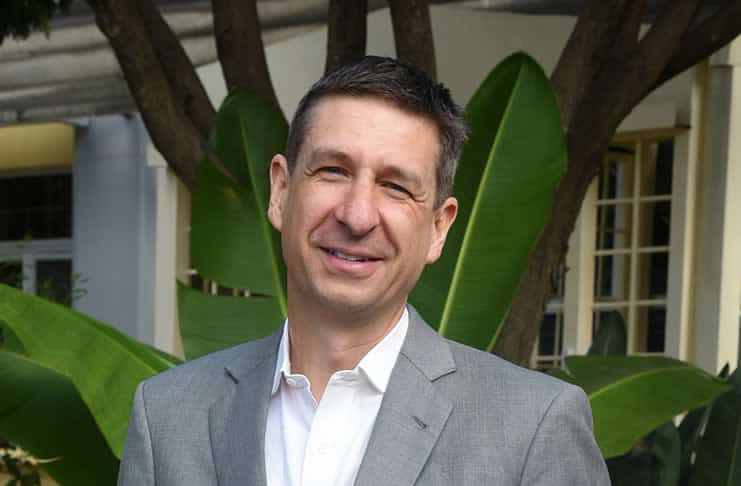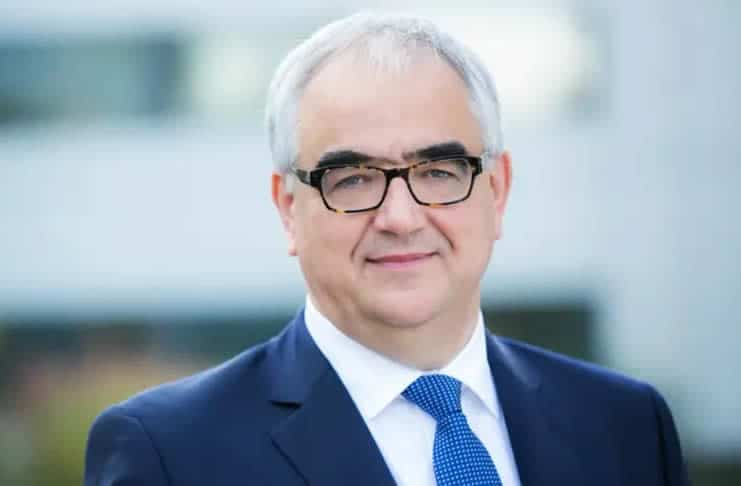Digital twin technology has come of age. Although it’s still relatively early days commercially, digital twins are rapidly being deployed across industries in a short period with impressive forecasts for the next years.
Powered by a range of technologies and with the Internet of Things and artificial intelligence (specifically machine learning) as enablers and driving forces digital twins are among others found in industrial markets such as oil & gas, in smart buildings and in the smart factory of Industry 4.0.
Digital twins are poised to play an important role in the digital transformation of healthcare, on multiple levels. In healthcare facilities and hospitals, for instance, digital twins are increasingly deployed to make use of ever more data from ample systems, sources and assets through using AI.
By creating a digital twin of a hospital, hospital administrators, doctors and nurses can obtain real-time insights into patient health and workflows
A real-time digital twin in a hospital enables to unlock the value of IoT – and all this data – to realize all goals of the quadruple aim of healthcare as summed up in our article on future health. Improved patient experience, enhanced health/clinical outcomes, improved caregiver experience and lower costs. The latter can be achieved in many ways, including lowering costs of operating the facility, reducing energy consumption, and optimizing how resources are used.
Digital twins in hospitals also power applications on the level of clinical workflows, operations and more. They offer a holistic view with several integrated capabilities and integrations are precisely what organizations are after in the digital transformation of healthcare.
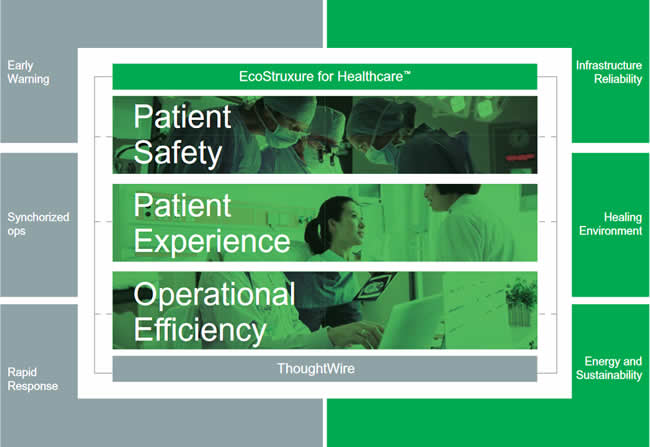
Enhancing connectivity between clinical operations and facilities management with digital twins in hospitals
One of the key players regarding digital twins in hospitals (and in smart buildings) is ThoughtWire. As a matter of fact, hospitals are a (first?) specialized facility area in which the company successfully expanded.
As a provider of digital twins for the built environment, ThoughtWire is also a digital twin vendor to watch per Gartner. In its portfolio of applications enabled by digital twin technology, there are apps 1) to enable real-time patient insights to predict and preempt code blues, 2) optimize hospital workflows (operations) and 3) respond faster to time-sensitive critical events (see the graphic: early warning, synchronized ops and rapid response; the EarlyWarning, SynchronizedOps and RapidResponse apps).
The joint ThoughtWire and Schneider Electric solution connects non-core services of building infrastructure with the clinical process of healthcare delivery, providing deeper insight into the environment of care
Early October 2019, ThoughtWire joined forces with a household name in smart buildings and healthcare facilities: Schneider Electric. Both companies announced a strategic partnership, in particular with regards to smarter digital hospitals and digital twins.
With its IoT-enabled EcoStruxure for Healthcare, Schneider Electric is among others active in energy management, power management and clinical environment optimization in hospitals. Leveraging the solutions of both ThoughtWire and Schneider Electric makes it possible to overcome some healthcare facility system and data silos in environments where little information traditionally gets exchanged. Typical examples include building management systems and thereby the limited connectivity between clinical operations and facility management.
Inside the digital twin partnership between Schneider Electric and ThoughtWire
Given the increasing demand for a more holistic view on different aspects of healthcare facilities and the operations/flows happening in them, the partnership between both companies is of strategic importance, not just on the levels of asset, resource deployment, workflow and facility optimization.
Initially, both companies will work together and co-sell their offers in markets where Schneider Electric has a direct go-to-market approach, as of 2020. In 2021, other markets will be addressed, also with the company’s EcoXpert partner program (that has a healthcare specialization badge). You can see how ThoughtWire fits in the EcoStruxure Architecture in the illustration from the data sheet below.
We’ve been working with our customers in healthcare for the past 10 years to orchestrate data from across critical clinical systems, OT systems, IoT devices, to build a real-time Digital Twin that makes it easier for clinicians to have full visibility into patient needs and the entire hospital workflow (Mike Monteith, CEO, ThoughtWire)
With digital twins and the possibilities they offer to get an operational building model of the facility and at the same time, enter data from clinical systems, etc. new system integrators – from the IT side – will be involved.
Most healthcare-specialized EcoXpert partners today don’t come from the IT side but have a BMS certification (building management systems) or a critical power certification. ThoughtWire will also feature on Schneider Electric Exchange, the platform/community, which the company launched early 2019.
By working with ThoughtWire for digital twins in hospitals, Schneider Electric can offer its healthcare facilities customers a connected hospital environment in which facilities management and clinical workflow operations are orchestrated seamlessly and both groups have the visibility they need to deliver the best outcomes for patients and staff.
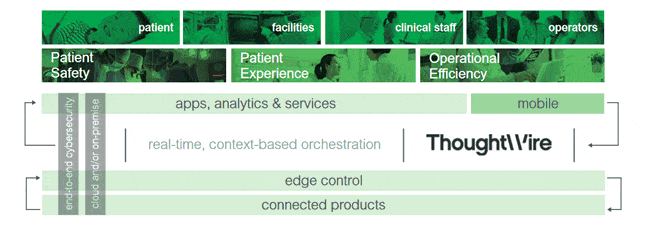
To make it more tangible a typical example that has an impact on patient experience, energy, etc. (to some extent comparable to a connected hotel room) whereby the lines between building and clinical operations are blurred as ThoughtWire’s Dan Nguyen describes.
Through ThoughtWire’s Digital Twin and the Schneider Ecostruxure BMS, clinical workflows trigger automation of the BMS, Dan writes.
The example: “when a patient gets admitted into a room, the Digital Twin and BMS can work together to automatically adjust the room environment accordingly (adjust the lights, temperature, blinds, air flow, etc.). More importantly, the room settings can be automated to a ‘standby’ or ‘default’ mode when the room is unoccupied, like when a patient goes down for a lengthy test or procedure”. No more silos and connected.
According to the CEO of ThoughtWire, Mike Monteith, more recently, there is also a need to connect aspects of building infrastructure like energy and environmental data to provide insights about the care environment back to facilities teams.
All images property of their respective mentioned owners.

